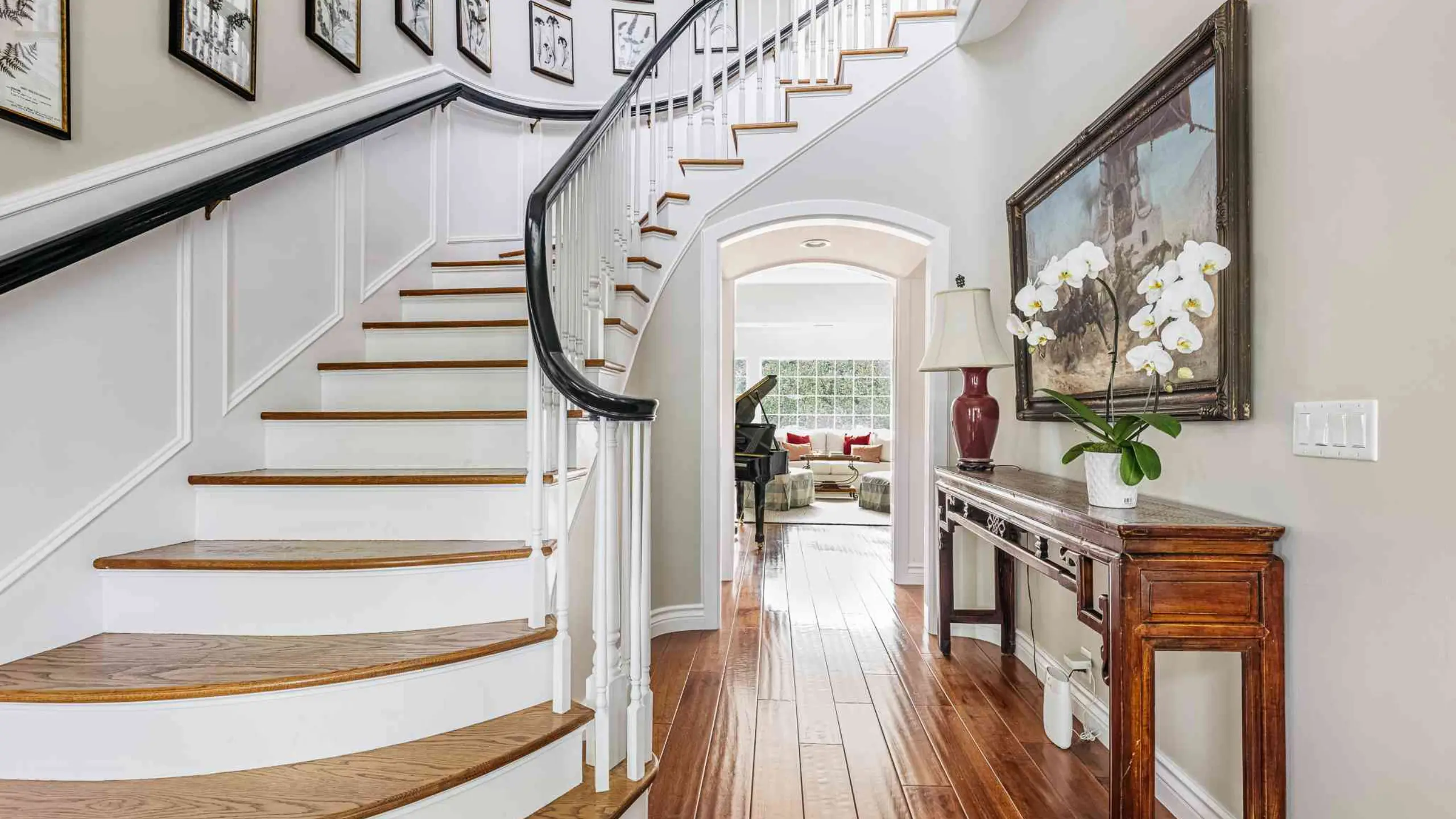When it comes to decorating and renovating a home, basement stairs are frequently forgotten. However, they can significantly alter the lower level’s appearance and functionality. There are many basement stairs ideas to choose from, whether you want to design a warm and inviting basement, a modern and sleek one, or something in between. Here are 18 designs for basement stairs that will enhance the look and utility of your house. This article will provide Basement Stairs Ideas That Add Style and Function that will completely revamp the lower level of your house.
Introduction
Basement stairs are useful for more than just getting into your lower level. You can use your basement stairs for more than just going down. You can also make them look nice and improve your home. There are many ways to make your basement stairs look good. For example, you can change how they look or make new ones. You can pick what you like for your basement stairs. Also, you can pick the things you want, like the color or the light. Then, you can find a way to make the basement stairs that you like and can afford. Finally, you can have a basement that is cozy, cool, or something else.
-
Open the stairs for a light appearance.
Removing the door and opening the enclosed stairway is one of the simplest ways to transform your basement stairs. The passageway leading to the lower level will feel light and airy as a result, and it will also appear bigger and more inviting. The open stairway can be improved by adding some plants, artwork, or lighting.
-
For a splash of color, paint the risers.
Consider painting the risers (the vertical parts of the stairs) in various colors to give your basement stairs some color and personality. A monochromatic color scheme will give you a more elegant and sophisticated appearance than a rainbow of hues. Another quick and low-cost way to modernize your basement stairs without replacing them is to paint the risers.
-
Use the wall of the staircase as storage
Utilizing the wall of the staircase as storage is another way to improve the usability of your basement stairs. In your basement, you can install built-in cabinets, shelves, or hooks along the wall to store things like books, toys, coats, and shoes. will not only save space but also keep your basement organized and clutter-free.
-
Use the Area Under the Stairs
The area under the stairs is frequently wasted or used as a place to dump useless items. However, you can make use of this area and make it a beautiful feature in your basement. Under the stairs, for instance, you could make a comfortable reading nook, a mini bar area, a wine cellar, a kids’ playhouse, or a home office. Adding doors or curtains will also help to hide the area when not in use.
-
Change the Basement Stairs’ Transition
Your home’s basement stairs serve as connecting corridors between various rooms. Choosing materials that are representative of the lower level makes sense. For instance, you can use wood or stone for your stairs if your basement is rustic or farmhouse-style. You can use glass or metal for your stairs if your basement is modern or minimalist. For a more eclectic look, you can also mix and match different materials.
-
For a unique look, stencil the stairs.
Your basement stairs can be decorated and made to stand out by having patterns or words stenciled on them. You can make sturdy, lovely stenciled stairs that match your style and theme using floor-and-deck enamel paint. Avoid using high-gloss paints or finishes that might be slick for safety reasons.
-
Custom stair rails can add style.
A stair rail offers the chance to dress up and adorn your basement stairs in addition to serving as a safety feature. For your stair rail, you can select from a variety of materials, shapes, and designs, including wood, metal, glass, rope, or pipe. Additionally, you can add decorations to your stair rail, like lights, beads, or stained-glass inserts.
-
For comfort, install wall-to-wall carpeting.
If you want to make your basement stairs feel warm and inviting, wall-to-wall carpeting is a great option. Additionally, carpeting can dampen noise and guard against stairway slips and falls. Depending on your preferences and budget, you can choose from a variety of carpet colors, textures, and patterns.
-
Wallpaper Can Add a Pop of Color
Another quick and inexpensive way to give your basement stairs some color and interest is with wallpaper. The wall of the staircase or the risers can be wallpapered with various motifs and patterns that go with your basement’s interior design. Additionally, wallpaper has the ability to conceal any flaws or damage to the wall or risers.
-
Combine paint with accent colors.
You can still use paint to add accent colors to your basement stairs if wallpaper is not your thing. To make your basement stairs stand out, you can paint the wall of the staircase or the treads (the horizontal portions of the steps) with contrasting or complementary colors. Additionally, you can use paint to decorate the wall or the treads with stripes, chevrons, or other geometric patterns.
-
Add Slats for Privacy and Style
Installing slats along the stairs is a great way to give your basement stairs more privacy and style. Slats are pieces of metal or wood that are positioned vertically or horizontally to form a partial screen or wall. Slats can let light and air through while also giving your basement stairs a contemporary and entertaining touch.
-
For a modern look, add metal railings.
Metal railings are a popular choice for giving your basement stairs a sleek and contemporary appearance. Because they do not obstruct the view or the light, metal railings can also give the impression that your basement stairs are larger and more open. Metal railings come in a variety of styles, including curved, horizontal, and vertical railings.
-
Install Glass Panels for a Sleek Look
Glass panels are another option for the stairs if you want to give your lower level a clean, sophisticated look. Glass panels, which reflect light and do not obstruct views, can also make your basement stairs appear more light-filled and spacious. In accordance with your preferences and requirements for privacy, you can select glass panels that are clear, frosted, or tinted.
-
Utilize Tiles for a Long-Lasting and Stylish Look
Tiles are a durable and fashionable option for adding texture and color to your basement stairs. Tiles are also resistant to moisture and wear and tear, both of which are common problems in basements. Depending on your preferences and budget, you can select from ceramic, porcelain, stone, or mosaic tiles.
-
Use Lighting to Create a Dramatic Effect
Lighting is an important component for basement stairs because it can improve the safety and ambiance of your lower level. Lighting can be added to your basement stairs in a variety of ways, including recessed lights, pendant lights, wall sconces, and LED strips. You can also use lighting to highlight the steps, the wall, or the railing on your basement stairs to create a dramatic effect.
-
Use wood for a warm, natural appearance.
Choose wood for your basement stairs if you want to create a warm and natural atmosphere in your lower level. Wood, especially reclaimed or distressed wood, can add character and charm to your basement stairs. Depending on your preferences and budget, you can select from a variety of wood species such as pine, oak, maple, or walnut.
-
Use concrete to create an industrial look.
If you want to create an industrial look in your basement, concrete is an unconventional and edgy option for basement stairs. Concrete can also add contrast and texture to your basement stairs, particularly when combined with other materials like wood or metal. Depending on your preferences and budget, you can choose from a variety of finishes and colors for your concrete stairs.
-
Use Stone to Create a Rustic Look
If you want to create a rustic look in your basement, stone is a unique and stunning option for basement stairs. Your basement stairs can benefit from the strength and beauty that stone can bring, especially if you use natural stone like granite, marble, or slate. Depending on your preferences and spending limit, you can choose from a variety of stone stair sizes and shapes.
Conclusion
The appeal of your basement stairs can be significantly increased by upgrading their layout and usability. By following the suggestions in this article, you can make your home more appealing and hospitable while also reflecting your individual style. Use your imagination, try out various materials, and turn your basement stairs into a stunning focal point.
FAQs
Q1: Is it difficult to install stairs in a basement?
Installing basement stairs can be challenging, depending on the existing structure, the desired design, and your level of expertise. To ensure a secure and precise installation, it is advised to speak with a qualified carpenter or contractor.
Q2: Can I design my basement stairs using several different ideas?
Absolutely! Feel free to combine various concepts to produce a unique design that reflects your preferences. Make sure the components complement one another and deliver the desired functionality and aesthetic.
Q3: How can I make the stairs in my basement safer?
Use slip-resistant materials for the steps, install handrails on both sides, make sure there is adequate lighting, and keep the pathways clear. Regularly check your stairs for any signs of wear or damage, and take immediate action if necessary.
Q4: Can I add my own flair to the design of my basement stairs?
Along the walls of the staircase, you can include decorative items, pieces of art, or pictures of your family to add personal touches. Your basement stairs will feel more distinctive and reflective of your individual style as a result.
Q5: Should I take any regulations or building codes into account when planning basement stairs?
Yes, it is important to design and install basement stairs in accordance with local building codes and regulations. By using these codes, safety requirements are met. To make sure your design complies with the necessary requirements, seek professional advice.



